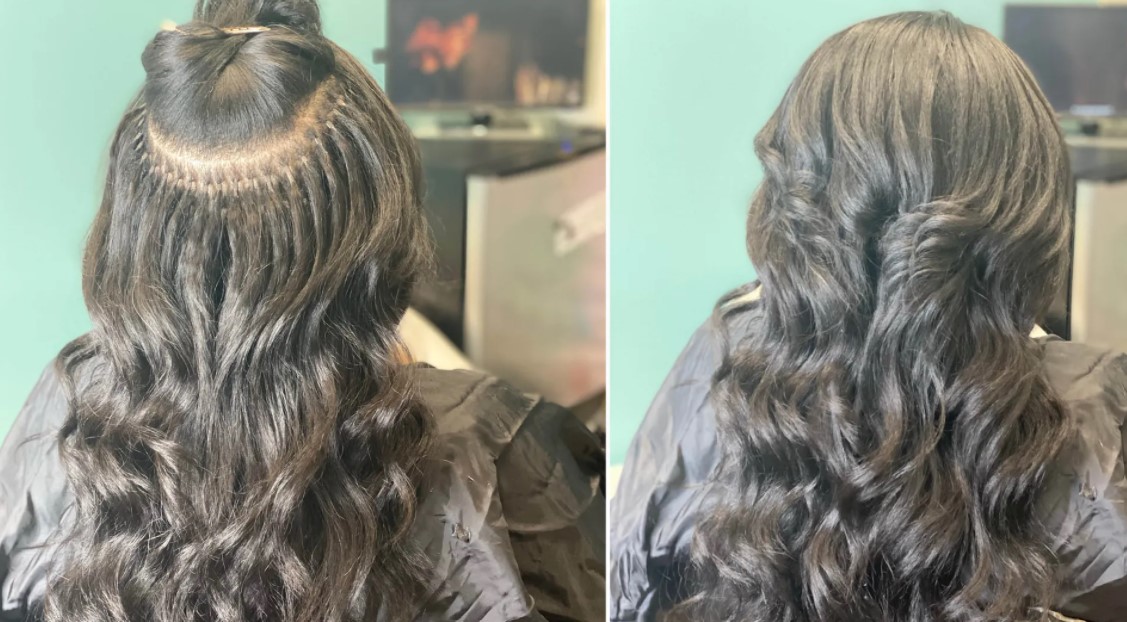
People like to have options when it comes to how they style their hair and that’s where microlink extensions come in handy. While this form of extension isn’t new, it's been growing in popularity in the past few years. If you’re considering them, these are the important points you need to know before you make that appointment with a hairstylist.
What Are Microlink Extensions?
Microlinks are extensions that can be attached to your hair through the use of microtubes or beads. There are two different ways to install microlink extensions depending on what works best for your hair and scalp.
In the weft method, the hair is attached through the use of tracks.
In the i-tip method, the hair is added to small sections of your hair using microbeads or tubes.
The weft method may take a shorter time to complete than the i-tip but that may vary from one hairstylist to another. Only your hairstylist can help you choose from the two methods so have a detailed talk before you make a decision.
RELATED: Healthy Scalp In The Winter
How Do You Know If They’re For You?
Each hairstylist has different criteria for accepting a client for installing microlink extensions. In some cases, you may need to have at least six inches of hair available when it’s been blown out. Some hairstylists will work with as few as three inches, though. It’s also important that your hair and scalp are healthy.
Based on how the extensions are installed, they can place a little pressure on your hair and scalp. If your hair is prone to breakage or you have chronic hair loss, the hairstylist might be hesitant to install the extensions. However, under certain circumstances, they may feel more comfortable if you get the go-ahead from a dermatologist.
What Kind Of Hair Do You Need?
When choosing the hair for your extensions, make sure you find the kind that matches your hair. Unlike other styles, your hair is not going to be hidden by the style so they need to match in color and texture. Most of the hair used for microlink extensions is straight or wavy but there are some other options for people with natural hair. Since you’ll be able to wash your hair with this style, it’s essential to consider what your hair looks like after being wet. The hair provider should be able to help with finding the right hair that matches your hair type.
RELATED: Helpful or Harmful? The Truth About “Protective” Hairstyles
Tips For Maintaining Microlinks
Microlink extensions don’t fall into the category of a low-maintenance protective style. You’ll need to take care of the hair as you would your own, especially because your hair is still present in the style.
It’s advisable to wash your hair at least every two weeks and you shouldn’t leave the style in for more than two months.
In fact, most hairstylists recommend that you come in for maintenance at the four or six-week mark. While it’s possible to maintain and take down microlink extensions at home, it might be difficult for a beginner so it’s best to go to your hairstylist.
For daily maintenance though, the emphasis is on gently brushing the style to ensure that it doesn’t get tangled. The same is true when you wash it.
Detangling microlinks will be a key part of shampooing and conditioning the style.
If you decide to take it down at home, a combination of water and conditioner can keep the site where the extension was installed from tangling as well.
Microlink extensions work well for most people but it’s good to get your hairstylist's input before taking the leap. As nice as the finished look is, it won’t be worth it if you can’t take care of it or end up damaging your hair and scalp. There are other options that work better for you until you can get microlink extensions done.








